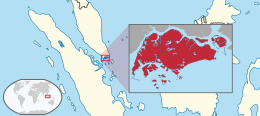I have posted three essays about the Idaho National Laboratory (INL). (See Nuclear Reactors 43 – Plutonium Accident at Idaho National Laboratory, Radioactive Waste 141 – Idaho National Laboratory May Lose Out On Lucrative Department Of Energy Spent Nuclear Fuel Contract, and Radioactive Waste 142 – Integrated Waste Treatment Unit at Idaho National Laboratory.) Now an ex-Governor of the State of Idaho is suing the federal government over the INL.
Former Idaho Governor Cecil D. Andrus just filed a lawsuit against the U.S. Department of Energy. Andrus is trying to use the Freedom of Information Act (FOIA) to force the DoE to make public information pertaining to the proposed shipment of commercial spent nuclear fuel to the INL. Andrus has spent months working to get the DoE to release information to the citizens of Idaho about a request by the DoE for a ‘waiver” from the 1995 Batt Agreement. The Batt Agreement prevents the INL from bringing commercial waste to the labatory.
Andrus put out a press release that said, ““It is clear that the federal government is withholding information from the people of Idaho that will allow all of us to more completely assess what they have in mind in both the short and long term with regard to commercial spent fuel coming to Idaho.” He also said, “I don’t take legal action lightly, but I do believe the information that DOE has refused to provide is essential to protecting Idaho’s environment as well as protecting the integrity of Governor Batt’s historic agreement.” Andrus is seeking “injunctive and other appropriate relief and seeking the disclosure and release of agency records improperly withheld.”
In January of 2015, Andrus demanded that information about the proposed shipment and the waiver request be released under the FOIA. Andrus has stated that the DoE “stalled” for months before handing over heavily redacted pages. The explanation that the DoE gave for the redactions was that in their judgment, releasing the information “would not be in the public interest.” The only information that the DoE did supply to Andrus was information that had already been made public. Andrus’s appeal of the decision to redact the requested information was denied.
The legal action was prepared by the Advocates for the West. Their executive director said that, “The DOE has left us little choice but to ask the federal courts to enforce the law. A fundamental tenet of the American system of government is openness and transparency. The people have both a right and an obligation to know what their government is doing. That is why we feel it is so important to bring this information to light.”
The complaint states that, “Numerous newspaper articles and opinions in Idaho have attempted to shed light on this issue. DOE has responded to the media’s attention by spinning the issue as a matter of supporting jobs at INL, rather than dealing with nuclear waste in Idaho … Although DOE has attempted to minimize the significance of the proposed commercial spent nuclear fuel shipments by describing them as ‘research quantities,’ DOE has briefed Idaho’s Leadership in Nuclear Energy Commission on the possibility of future ‘research’ at INL involving more than 20 metric tons of spent fuel.”
Andrus fears that the DoE has long-term plans to bring much larger quantities of spent nuclear fuel to the INL than it has admitted publicly. In view of the fact that there is no permanent repository in the U.S. for spent nuclear fuel, Andrus is concerned that any spent fuel shipped to the INL will remain there for the foreseeable future. He said, “Without DOE leveling with Idaho about both near-term and longer range plans we simply have no ability to assess the wisdom of what they are planning for the state. I suspect they know what they are planning will be very controversial and for that reason they want to keep it secret. That is simply unacceptable.”
Former Governor of Idaho Cecile Andrus:






